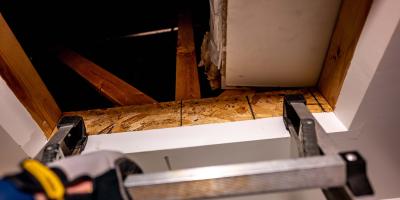White-Nose Syndrome: How Bad is It?

White-Nose Syndrome is a disease caused by a fungus, which biologists first encountered in New England back in 2007. Bats were found sick and dying inside caves located in Albany, New York and each bat had a white powder-like substance on its nose, which almost looked like fuzz.
After this discovery in North America, other countries began checking to see if their bats also contracted this fungus. Soon, bats in Europe and Asia were also diagnosed with white-nose syndrome. Now, it is considered an increasing problem for both bats and humans, indirectly.
Is This Harmful for Humans?
To clarify, humans cannot contract white-nose syndrome, not even if they are directly exposed to a bat that is infected or is in a cave where the fungus lives. This is because the fungus can only grow at very low temperatures (41-68 degrees F), which is far lower than the average human body temperature of 98.6 degrees F.
While we can’t contract white-nose syndrome, we can possibly transmit it to the bats. Transmission can occur simply from inadvertently and unknowingly carrying the fungus on the clothes we wear while interacting in the same area that a bat lives.
What Happens to Infected Bats?
In New Hampshire alone, 5 out of 8 bat species are affected by white-nose syndrome. Signs that the bats are afflicted with this disease, aside from the white nose, are erratic flying or flying during the daytime.
Typically this is associated with rabies, however, only 5% of bats that are submitted for testing come back positive for rabies. The true threat for these creatures is white-nose syndrome. When a bat is infected, it is unable to hibernate, and instead, it flies more frequently, burning the fat that should be stored to get them through the winter.
How Can This Affect Humans?
We should care about this issue for our distant relatives. That is right, bats are closer to us than they are to rodents. Besides being relatives, they are great predators on summer nights. By eating the number of pests that they do, they save farmers from having to use pesticides. The money saved annually is estimated between $3.7 and $54 billion dollars.
In addition to pest eaters and money savers, they share a common quality with bees -- they are great pollinators. Plants and flowers depend on bats for their pollination and also seed spreading to continue their growth. Some plants rely entirely on bats for this process. Imagine what might happen in their absence.
What Can I Do For the Bat in My House?
If you find a bat in your house, specifically your attic, don’t panic. The best thing to do is contact your local pest control professional who can ensure their safe and humane removal.
At JP Pest, our team is expert at bat removal based on exclusion methods that are both safe for the bats and effective at removing them for your safety and peace of mind. By installing one-way excluder doors, we’re able to give the bats a way out, while ensuring they cannot come back inside.
We also are sensitive to the time of year that we perform this work, which is always done early spring or late summer, to ensure that bats are able to safely relocate. We don’t want our dutiful pest hunters to become further endangered.
Visit our bat page to learn more about bats and how to safely remove them.



